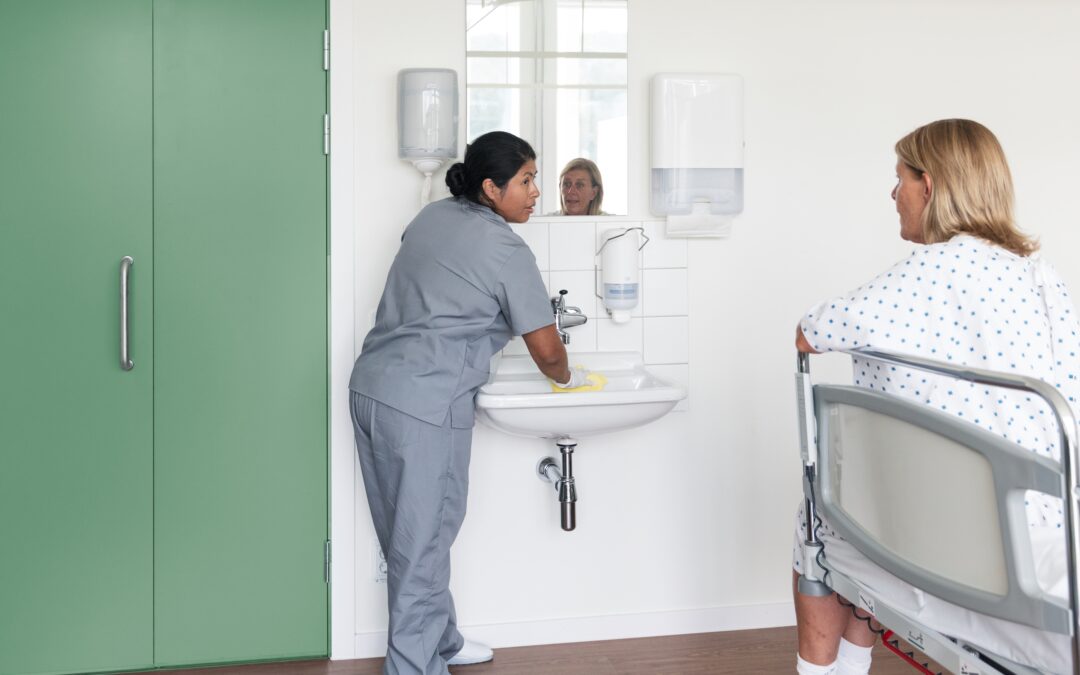It is now generally accepted that handwashing is vital in hygiene-critical industries such as food manufacture and healthcare. People in hygiene-critical industries need to wash their hands frequently to avoid the risk of cross-contamination. In this article, Tom Marshall from Tork manufacturer, Essity looks at the biology of the hands and considers the best way to clean them. Hand hygiene is important for food workers to prevent any risk of product contamination or tainting. But it is particularly crucial that medical workers should cleanse their hands frequently to prevent cross-contamination and curb the spread of infections.
According to World Health Organization (WHO) guidance, the visibly-soiled hands of healthcare workers should be washed with soap and water for between 40 and 60 seconds and then thoroughly dried to ensure a methodical clean. If the hands are not visibly soiled, an alcohol gel may be used instead for a period of 30 seconds.
But many people in hygiene-critical industries still neglect their hand hygiene regimes for several reasons. Healthcare workers under intense pressure to deliver life-saving care may carry out a cursory hand-wash to save time, for example. People in professions where frequent hand washing is required may also suffer from occupational dermatitis which could cause their hands to be chapped and sore. This might then make them reluctant to wash their hands since soap and water will only aggravate the condition. Additionally, the fact that the microorganisms on the hands are too small to see makes it hard for operatives to understand the importance of removing them.
The skin is composed of two layers, the outer epidermis and the dermis beneath, both of which cover a subcutaneous layer of tissue. The epidermis contains many cracks, crevices and hollows in which bacteria can collect and breed. And the outer surface of the skin – the stratum
corneum – is covered with a waxy cuticle to which microbes can adhere.
Microorganisms on the skin are generally divided into two types: resident microorganisms, which permanently inhabit the skin’s epidermis, and transient bacteria, which are picked up from the atmosphere or deposited onto the skin through contact with a contaminating source.
Transient bacteria take advantage of disturbances in the normal resident microflora – a cut or an abrasion, perhaps – to gain a foothold and establish themselves, and they may then cause infection along with the symptoms of disease or illness.
It is impossible to completely remove all microflora from the skin, even with a surgical scrub. But since almost all disease-producing microorganisms fall into the category of transient bacteria, it is these that need to be removed from the hands.
This can be achieved by scrupulous handwashing. The concentration of organisms tends to be greatest on the fingertips and under the nails, so these are the areas of the hands that need particular attention in any handwashing regime. Skin-friendly soaps and soft towels are important for healthcare staff since these will allow them to cleanse their hands effectively without aggravating any skin condition they might have. Operatives also need to understand how and when handwashing should take place. According to the World Health Organization, staff need to wash their hands before touching a patient, before carrying out any aseptic procedure, after any exposure to body fluid, after touching a patient and after touching the patient’s surroundings. Thorough hand washing should involve thoroughly cleaning the palms, fingers and backs of the hands using soap and water and then drying them thoroughly afterwards with a single use towel.
Hand drying is particularly important because tests have shown that damp hands can transmit 500 times as much bacteria as dry hands. And rubbing the hands on a towel produces friction which helps to remove the bacteria. Posters, stickers and other reminders will encourage healthcare staff to wash their hands frequently. And regular training can also help to keep hand hygiene top-of-mind.
Essity offers its own training module instructing healthcare workers how to wash their hands. Tork Clean Hands Training invites users into a digital world where they are confronted with a series of scenarios in which hand hygiene needs to be carried out.
Trainees take on the role of a nurse, carer or doctor in a hospital or care home where they are tasked with caring for several patients. The trainee’s results are assessed on how far they comply with the World Health Organization’s 5 Moments for Hand Hygiene. Tork Clean Hands Trainings are also available as virtual reality apps.
Hand washing is important in hygiene critical industries – but workers need to be constantly reminded of the fact. And this can be achieved by providing comprehensive training – coupled with the right tools to allow them to carry out the task.

